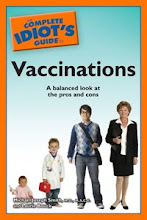Radiation overdoses in both adults and children from computed tomography (CT) scans have lead to a lot of worry and finger-pointing in the news recently.
The issue was uncovered in a New York Times investigation by Walt Bogdanich of patients who experienced strange side effects after receiving CT scans to measure blood flow to their brain. CT scanners take a series of X-rays to create three-dimensional images of the body.
Bogdanich reported that over 400 patients at hospitals in California, Alabama, and Florida received as much as 13 times the recommended radiation doses from CT scanners. After the scans, the patients developed symptoms such as hair loss, confusion, and memory loss, and might now be at increased risk of developing cancer and brain damage.
Most of the scanners in question were made by GE Healthcare, Bogdanich reported. Hospital staff blame the overdoses on faulty training about how to use a new feature of the CT scanners designed to reduce the radiation dose. They say that a glitch in the scanners' software unintentionally lead to radiation overdoses. GE Healthcare, on the other hand, blames the hospital staff for misusing and misunderstanding this feature, and for not tracking the radiation doses more carefully for each patient.
The FDA had been investigating this issue over the past year, but "was unaware of the magnitude of those overdoses until The Times brought them to the agency's attention," Bogdanich wrote.
Meanwhile, Chicago Tribune reporter Judith Graham wrote that many children are receiving unnecessary adult-sized doses of radiation when they get CT scans. Because children often receive CT scans at hospitals for adults, the radiation doses are not always adjusted for the child's weight and size.
This is a particular problem for children because "kids' changing bodies and brains are especially sensitive to ionizing radiation from X-rays used in the exams," wrote Graham. These radiation doses might also increase a child's long-term risk for cancer.
Children's hospitals are usually careful to adjust CT dosages for their patients, wrote Graham, but many other hospitals and imaging clinics are not as careful.
Graham wrote that a national campaign called Image Gently, endorsed by the American Academy of Pediatrics and other organizations, is working to reduce radiation dosages for children. The site features a Parents Page with educational information on children's CT scans and X-rays. Mayo Clinic researchers are also currently developing new CT algorithms that can halve the amount of radiation that patients are exposed to.
These stories demonstrate the problems that can occur when technology outpaces research and regulation. "Americans are receiving more medical radiation than ever before," wrote Bogdanich, "a result of rapid technological advancements that improve diagnosis but can also do harm when safeguards and oversight fail to keep pace."
Subscribe to:
Post Comments (Atom)




No comments:
Post a Comment